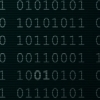You really need to read more about how the World, View and Projection matrices are used in 3D development, especially how they would be used for a first person camera, if that is what you're after. And reading code doesn't count.
It sounds to me like you only read and implemented a couple of beginner tutorials which usually teach you only how to put stuff on the screen, in which case a simple view matrix which makes the camera point forward is sufficient.
The rotation and translation mechanics of a first person camera, which would be a specific implementation of the view matrix are not usually covered by such tutorials.
Don't constrain yourself to just reading tutorials from the GLM documentation. The theory behind those matrices is not only specific to GLM. Any 3D graphics library or API uses the same concept of World, View and Projection matrices. And most likely, none of those helper libraries like GLM go into detail about the theory. They just throw you into the code assuming you already know how matrices work. Although it sounds to me more like you did not even try at all to understand how the matrices are used to implement a first person camera, rather than that you read code that does what you want. You can't just wing it and hope it works.
Considering that I'm not afraid of quaternions and I know they remove gimbal lock if used correctly, what is the best way to create a view matrix that rotates the camera itself by specifying pitch, yaw and roll?
To give you a nudge in the right direction: the problem is not HOW you create the matrices, but WHEN you use them. You already have the HOW part covered by using the glm::rotate() function. And from the theory, it should already be obvious that if your "cam" matrix affects the objects instead of the final scene, it's because you're concatenating (multiplying) your "cam" matrix too early on as part of the final, composite matrix.





